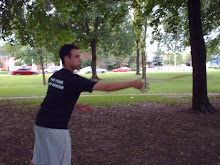One of the first things you should plan for in designing a disc golf course is the spacing. It is a good idea to pick an area where you can put a bathroom, parking lot, possibly a country club, and start from there. As you begin to design a disc golf course, keep in mind that length is not important because having an entirely long course is no fun. Disc golf requires you to have control shots in your repertoire and shortening up some holes as well as adding new hazards can increase the difficulty of your course. When designing a course, there should be no chance of a disc injuring other people in the park or landing in a private area.
After the decision has been made on where the holes will be placed, the next thing to do is draw the layout of the course and decide on the pars for each hole. Along with the placement of the holes, it is important to determine where the tee areas will be and the exact distance of each hole (measured in feet). Rather than having multiple basket placements per hole, it is easier to design a course with more than one tee area because this helps separate the beginners from the more advanced players.
Unlike ball golf, in disc golf there are no greens around the basket. Instead architects like to put hazards close to the basket because it makes putting a lot more challenging. If you are an average to above average disc golfer, having a free putt with no hazards in the way is very easy.
One of the last things architects do before the course is completed is deciding on what the tee area will look like. Most courses I have played consist of cement tee areas, but supposedly most professional disc golfers dislike them. Other types of tee areas include grass or gravel. The location of the course as well as the length of each hole can have a major impact on the material used for the tee areas.

No comments:
Post a Comment